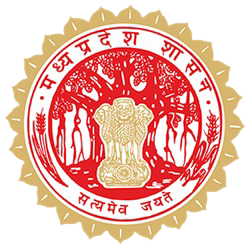GENERAL INTRO
Definition
Community Policing is understood as Policing with the help of Community.
Community Policing is a collaborative effort between Police and Community to identify problems of crime, disorder and involves all elements of the community in the search for solutions to these problems. This concept brings the police and community into a closer working relationship and calls for greater responsibility on citizens.
We all are aware that Policing includes the following:
- Maintenance of order and peace,
- Security, safety of the people and property.
- Ensure effective enforcement of law.
- Detection of crimes
- Orderly flow of traffic in urban areas and in highways and lot more.
Thus discussing the objective of Police in relevance to community reveals to concept of community policing which ideally is:
- Policing, as far as possible and practicable, by the community itself which means that any or all the functions mentioned above may be performed by the community to the extent they can and the remaining functions to be performed by the police with the assistance and involvement of the community to the maximum extent possible.
- The concept of Community Policing started from village Kotwal. Where a person from the community performs the functions of the police in the village. Gradually and unfortunately the concept of Village Kotwal had been undergoing changes where its community character seems to be dwindling. Home-guards were another form of community policing. Even this has now become more a part of police force than of the community.
- Civil defense / emergency relief plan developed primarily on involvements and participation of the people in performing the safety, security, relief, and crisis management functions of the police during emergency. But now the idea needs a broader vision, more and regular involvement of Citizens and Police itself.
Few examples of Community Policing are :
- Informal arrangements of night watchman, patrolling an area and obtaining remuneration from the house-holds of the area, is another form of community policing at the initiative of the watch-man but with the willing acceptance of the neighborhood.
- Security arrangements in housing complexes and housing societies, security arrangements in factories and large establishments are another form of community policing.
- Institutions like Peace committees activated during period when there is serious apprehension / threat of break down of law and order.
- Civil defense plans / emergency relief plans during riots or wide spread break-down of law and order.
- The concepts of rural policing by community (Kotwal),
- Trained people in the community to perform the functions of the police when required (home-guards)
- Identified Sector Wardens, Chief wardens etc (under civil defense / emergency relief plan),
- Special police officers, Honorary Magistrates and involvement of people in trail of offences
Few Schemes for Community Policing are :
- Neighborhood watch scheme.
- Senior citizens’ scheme.
- Self defense camp for girls.
- Special police offers for every neighborhood in the in the urban areas.
- Crime stopper scheme aimed to encourage members of the public to play a part in detecting crime by giving information.
- Management by one or close involvement of police in.
- De-addiction centers for drug addicts and alcoholics.
- Juvenile aid camps.
- Orphanage.
- Shelter homes for run away children.
- Senior citizen’s home.
Thus, citizens can form groups within the society or the area they live or work. Such social group can enroll themselves with the Police and work hand in hand with Police to solve problems, minimize disorders in the society and thus achieve the very objective of Community Policing.
Evolution
The evolution of police in India over the years, has been guided by the compulsions and needs of the dominant ruling class, may it be a Maurya or Gupta king, a Moghul Monarch, the British running a colonial system to achieve their ends of occupation or even, sadly, so, in our present day democratic arrangement. We must well understand that the Police have been the principle medium through which the dominant classes have sought to perpetuate their hold on power and authority by means fair or foul. Thus, making the Police an instrument of oppression and giving it the image of a rough and ready ruler friendly organization rather than that of an agency, which is impartial and neutral and which objectively enforces the rule of law.
Ironically, in our country’s post independent history too any move to change the basic framework, which even remotely lead to the lessening of control over the Police has been resisted wholeheartedly by the powers that be. In over half a century of independence many commissions were set up and recommendations received without much having been done to let the Police come out its negative image.
In any free society all organs of governance or private enterprises feel a compelling need to contribute positively to the growth and progress of the country. If this is true than how can those who join the police continued to be identified as a grossly negative force of oppression? All of us have the want and desire to contribute positively.
Even today Police continue to be inextricably enmeshed in and unable to come to terms with contemporary social reality and increasingly becoming alien and painfully irrelevant in the current Indian situation. Can a rapidly changing society swearing by democratic principles afford to live in perpetual conflict with its primary law enforcement agency?
The crying need to move from a negative to positive image is always present in our minds. The society too — informally – wants this most manifest arms of governance to become more people friendly and compassionate – like the British “Bobby” – may be. Having known the Police only as a repressive corrupt and aggressive agency, the society had to be the first got involved in the processes, which the Police executed. It was also felt that such efforts would essentially and actively have to come from the Police itself.
This was the guiding force for us in Madhya Pradesh to launch ourselves into the entire gamut of Police – Community relations. Though informally efforts in this direction had been made at different levels earlier but a concerted deliberate and formal effort was launched in 1995 at Indore. These initiatives were also emulated by other districts and are getting accepted as an effective mode of improving Police – Community Relations.




